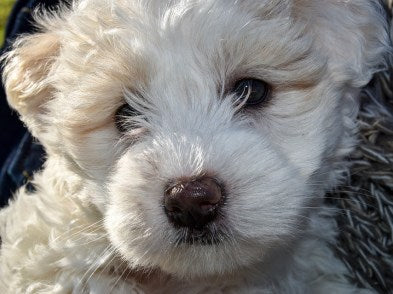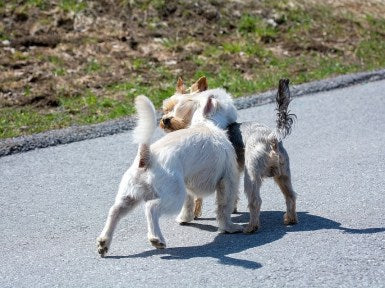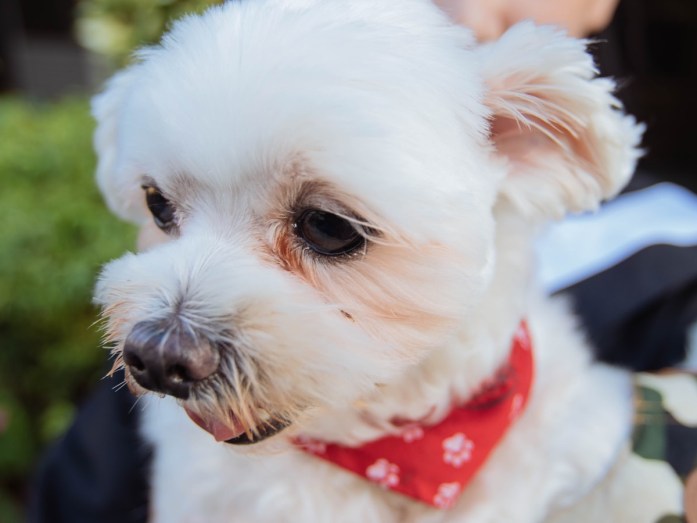Maltese dogs are loyal active dogs that also enjoy cuddles and taking naps on your lap. This bite-sized long-haired pooch is one of the most popular dog breeds.
You will fall in love with their wide puppy eyes and loving disposition.
Are you considering adopting one of this adorable ball of fluff? Read our article to find out everything you need to know about Maltese dogs.
History

Maltese dogs can trace their roots back to ancient Rome and Greece, where they were part of the trade market. Also known as the Maltiaie in the past, people would barter them for expensive items like silk, wine or olive oil.
They are native to Malta, Italy. However, this breed’s good looks and (seemingly) gentle nature made their existence known all over the world. They became a popular in the trading world as traders began to bring them into Europe. Eventually, the Maltese made its way to Egypt where they became a very well-known dog breed.
Subsequently, Maltese dogs found their way to England in the early 1300s where the upper class adored them. This adorable lap dog did not arrive in America until the 1870s.
The American Kennel Club officiated the Maltese dog breed in 1888. Today the Maltese breed is one of the most popular dog breeds, ranking at 22nd.
Features
Typically, Maltese dogs are 7 to 9 inches (18 to 23 cm) in height and weigh no more than 7 pounds (3kg). Their silky long white hair would hang to the ground, if not properly cared for. They have a gentle yet alert expression with round eyes and floppy ears.

Temperament

Maltese need time and affection.
Although they love to romp and play, your Maltese feels the happiest when curled and snuggled up on your lap. They thrive on constant companionship with their owner, so this is not a good breed for someone who does not have a lot of time to devote to their furry companion.
Due to their need to constantly please their humans, Maltese dogs are easy to train. They respond well to affection and praise and they love to show off their tricks to anyone who will watch.

Maltese dogs excel at being obedient, agile and they also excel at tracking. Even as therapy dogs, they are good at too!
Take care not to spoil or over-pamper your Maltese dog, This can lead to dominant behaviour, aggression and even separation anxiety. Maltese dogs tend to become extremely attached to their primary owner and boundaries should be established at an early age.
Are they social?
While they are good with older children, Maltese do not do well with younger children. If they become afraid or defensive, they may bark and even snap. They tend to be generally overprotective of their owners. It is important to set a strict chain of command early on to keep them from acting out.
To help socialise your Maltese to children, strangers and other animals, it is best to enrol them in obedience classes at an early age. In addition, puppy play groups will help your dog learn to adjust to others.

They are very protective.
Despite their size, Maltese dogs make fierce guard dogs due to fearless and protective nature. They can be quite timid when meeting strangers as well. However, they are generally calm in the presence of their owners.
Maltese dogs are very playful and enjoy going for walks with their human companions. Due to their small stature, they do not do well on long, vigorous walks as would a larger size dog.

What is ideal environment for a Maltese?
Due to their size, Maltese dogs do well in small areas such as apartments. They do not shed a great deal, making them an ideal pet for those who suffer from allergies.
Moreover, they do not do well in extreme temperatures, so they do not like to be outdoors for long periods of time. Maltese dogs prefer to be indoors with their humans.
Health and Lifespan

The average life expectancy of a Maltese is 12 to 15 years. While they are generally a healthy breed, they may suffer from certain health issues.
Keep in mind that dogs are like humans or any other animal and may develop health issues over the years. One of the keys to a healthy dog is to adopt from a reputable breeder.
As most small dogs, Maltese may be prone to breathing issues, arthritis and obesity. Following are some of the other health issues that are common amongst Maltese dogs.
Luxating Patella
This is a condition with small breed dogs in which the kneecap does not form properly and thus is prone to slipping out of place. In most cases, it will correct itself, but surgery may be required.
Progressive Retinal Atrophy (PRA)
PRA is a generic eye disease which often leads to blindness in some small breed dogs.
White Dog Shaker Syndrome
In this condition, a dog may suffer from tremors, shakes and issues with coordination when overexcited. It is prevalent in white haired dogs, hence the name. It is not painful for the dog, but it can be quite stressful for those who witness it.
Reverse Sneezing
Reverse sneezing can occur when your Maltese is overestimated. As well, it can be an allergic reaction. They may be upset by this sudden snorting noise but can be calmed down with a reassuring cuddle from their human.
Collapsed Trachea
Unlike reverse sneezing, a collapsed trachea is more serious. If you notice your Maltese has a harsh sounding, dry cough, seek medical attention.
Hypoglycemia
This is a condition in small breed dogs due to low blood sugar. If you dog experience seizures, confusion and weakness, these could be signs so blood work might be necessary to diagnose, along with medication to treat the illness.
Maltese dogs are tiny and active, this means they tend to be underfoot a great deal of the time. Always be mindful of their presence so as not to step on them or trip over them, thus causing injury.
As with many small dogs, they tend to be jumpers so be wary of breakables. Safety proof your home for your Maltese as you would a toddler. And be wary of their jumping as they age, to prevent back and leg injuries.
Grooming

In order to prevent matting, you should brush your Maltese daily, using a stainless steel comb or pin brush. Before brushing, spay their coat with a mixture of water and conditioner to help prevent breakage.
If your Maltese dog’s coat is prone to matting, you can have their hair trimmed by a professional groomer to prevent troublesome knots and tangles.
It is also recommended to bathe them regularly using gentle dog shampoos and conditioners for their coat. Before you bathe your Maltese dog, carefully comb their hair to remove all knots.
Use a towel to absorb the majority of the moisture before blow-drying their coat. Air drying will cause their coat to look ragged. If this routine is too cumbersome, you can have you Maltese groomed by a professional dog groomer.
Trim your Maltese’s nails regularly to prevent them from scratching. As well, clean their ears regularly to prevent wax build up. It is best to brush their teeth as well to prevent dental disease as they age.
Care and Nutrition
It is best to feed your Maltese high quality wet and dry dog food, age appropriate. This breed can easily gain weight due to their small stature so it is crucial to keep an eye on their calorie intake to prevent obesity.
Try to limit treats and table scraps to help them maintain a healthy weight. Recommended dry feeding is one quarter to 1 half a cup daily, split into two meals.
Maltese dogs are notorious for being picky eaters so you may have to do some trial and error to find food that they like. Just make sure that it is age and weight appropriate as well as high quality to ensure that they are getting the required amount of nutrients for a long and healthy life.
Proper veterinarian care is also an important part of pet health. Take your Maltese dog to the vet regularly and ensure that they are up to date on their required vaccinations.
Where to Find a Maltese
Should you wish to get your Maltese from a breeder, take the time to do some research. Always purchase from a breeder that you know you can trust.
There are thousands of dogs (and cats) of all breeds waiting in shelters to find a home. Consider saving a life and adopting your Maltese dog from a local animal shelter. As well, you can look online for Maltese dog rescues.
Fun Facts About Maltese Dogs

- Maltese dogs are known for being beloved by royalty. Both Queen Elizabeth and Mary, Queen of Scots have owned a Maltese.
- Other famous Maltese owners include Marilyn Monroe, Tony Bennett, Barbra Streisand and Elizabeth Taylor.
- Maltese dogs are the oldest of the toy dog breed, dating back for over 28 centuries.
- Maltese dogs are prone to sunburn. They do not have an undercoat and their skin can burn easily. As well, their noses may burn so it is imperative to keep them out of the sun.
